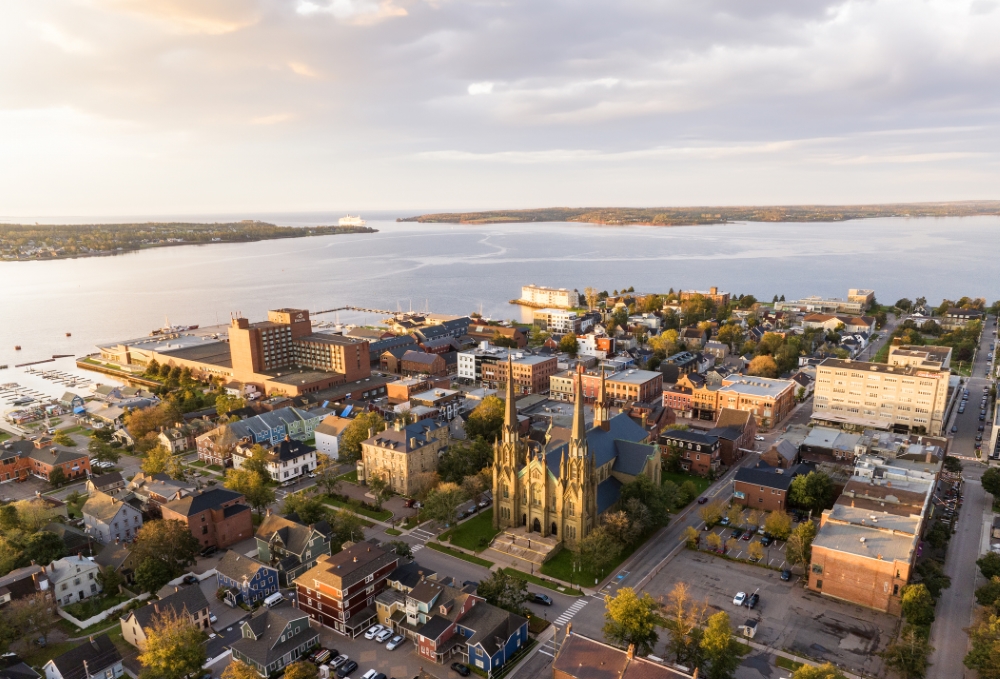Canada’s most densely populated province, Prince Edward Island, is updating its existing district energy plant that recycles waste and biomass into sustainable heating and cooling for over 145 buildings in its capital city of Charlottetown.
In September 2022, tropical storm Fiona rolled across Prince Edward Island, battering the idyllic province with hurricane-force winds and torrential rain that delivered significant damage to the island’s coastlines, trees and electric grid. Hurricane season is just one of many aspects being considered in the new district energy plant project from Toronto-based Enwave Energy Corporation.
“Extreme weather events on the Island underlie a further need for a reliable and secure supply of energy,” says Enwave CEO Carlyle Coutinho. “Storms are more frequent. Resilient energy systems are important.”
Rob Thornton, president and CEO of the International District Energy Association, says none of the buildings powered by the existing energy district plant in PEI went offline during Fiona, a notable show of resilience for a plant nearing the end of its roughly 30-year lifecycle.
Different entities in PEI are still working on fortifying their infrastructure post-Fiona against future extreme weather events on the isle, which are common due to its maritime location and climate. Coutinho notes several other reasons why PEI is a prime location for energy projects:
- PEI aspires to decarbonization/net zero, with clear targets set for 2030 and 2040 GHG emissions.
- Due to location and limited space, PEI imports a lot of energy. There is opportunity to improve security of energy supply.
- Government has a desire to innovate and a strong ability to partner.
“Decarbonization and electrification of the economy is a real challenge for buildings,” Coutinho says. “People are looking to partners with focused expertise in developing low-carbon energy systems on a commercial basis to help them create value for their companies and institutions.”
District energy leverages heat generation through combined heat and power plants and technologies, boiler systems and heat pumps. The district energy plant upgrade in PEI has been ongoing since 2017, pursued by Enwave through the COVID-19 pandemic, supply chain constraints and tariff challenges.
“What is really commendable about this expansion is that it involved many layers of government — local, federal and provincial,” Thornton says. “It isn’t government funds per se, but the many layers of government that are involved in this investment. These projects take time.”
With the cooperation of the Province of Prince Edward Island government, Enwave plans to build the new waste-to-energy facility adjacent to the existing one, which will provide heating to Queen Elizabeth Hospital, the University of Prince Edward Island, schools and residences in Charlottetown.
As stakeholders and building owners “move to electrify their building, they are also taking on the risk of being in the retail electric market when power prices have been increasing rapidly,” Thornton explains. “[District energy] in PEI is more elegant because the system has the thermal scale … By expanding their energy-to-waste system, they are expanding the circular economy of that system and area. Instead of having landfills maxed out, or waste exported, they are exporting a waste stream into a fuel, into a benefit.”
The expansion in PEI is maintained financially by the Infrastructure Bank through an aggregate C$600 million supporting innovative energy projects across Enwave’s portfolio, including Lakeview Village in Mississauga, Ontario, and the Etobicoke Civic Centre in Toronto.

